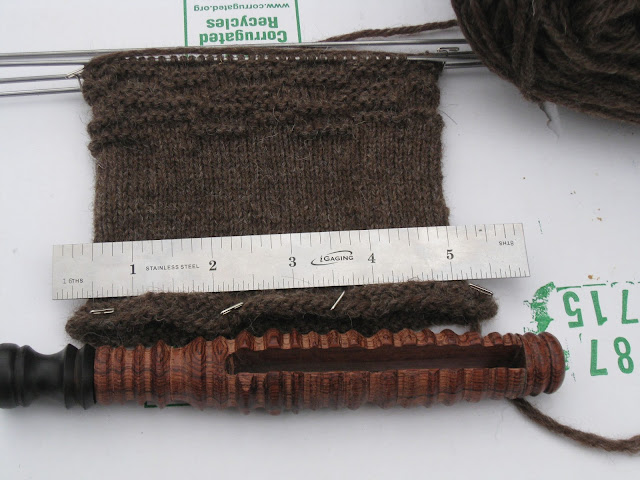Ice melt, sea level rise and superstorms: evidence from
paleoclimate data, climate modeling, and modern observations that 2 °C global
warming is highly dangerous
We suggest that ice sheet disintegration is a highly nonlinear process and poses a danger of rapid sea level rise. We find evidence in paleoclimate observations and in global climate simulations supporting the existence of amplifying feedback processes that would contribute to nonlinear ice sheet response. Modern observations reveal that these processes are already underway, including cooling of the Southern Ocean surface. We conclude that a 2°C limit on global warming is not a safe “guardrail".
Hundreds of comments addressed by the authors
The final paper is http://arxiv.org/abs/1602.01393
Abstract:
We use numerical climate simulations, paleoclimate data, and modern observations to study the effect of growing ice melt from Antarctica and Greenland. Meltwater tends to stabilize the ocean column, inducing amplifying feedbacks that increase subsurface ocean warming and ice shelf melting. Cold meltwater and induced dynamical effects cause ocean surface cooling in the Southern Ocean and North Atlantic, thus increasing Earth's energy imbalance and heat flux into most of the global ocean's surface. Southern Ocean surface cooling, while lower latitudes are warming, increases precipitation on the Southern Ocean, increasing ocean stratification, slowing deepwater formation, and increasing ice sheet mass loss. These feedbacks make ice sheets in contact with the ocean vulnerable to accelerating disintegration. We hypothesize that ice mass loss from the most vulnerable ice, sufficient to raise sea level several meters, is better approximated as exponential than by a more linear response. Doubling times of 10, 20 or 40 years yield multi-meter sea level rise in about 50, 100 or 200 years. Recent ice melt doubling times are near the lower end of the 10-40 year range, but the record is too short to confirm the nature of the response. The feedbacks, including subsurface ocean warming, help explain paleoclimate data and point to a dominant Southern Ocean role in controlling atmospheric CO2, which in turn exercised tight control on global temperature and sea level. The millennial (500-2000 year) time scale of deep ocean ventilation affects the time scale for natural CO2 change and thus the time scale for paleo global climate, ice sheet, and sea level changes, but this paleo millennial time scale should not be misinterpreted as the time scale for ice sheet response to a rapid large human-made climate forcing.
Selected passage
6.2 Southern Ocean, CO2 control knob, and ice sheet time scale
Our climate simulations and analysis of paleoclimate oscillations indicate that the Southern Ocean has the leading role in global climate change, with the North Atlantic a supporting actor. The Southern Ocean dominates by controlling ventilation of the deep ocean CO2 reservoir. CO2 is the control knob that regulates global temperature. On short time scales, i.e., fixed surface climate, CO2 sets atmospheric temperature because CO2 is stable, thus the ephemeral radiative constituents, H2O and clouds, adjust to CO2 amount (Lacis et al., 2010, 2013). On millennial time scales both CO2 and surface albedo (determined by ice and snow cover) are variable and contribute about equally to global temperature change (Hansen et al., 2008). However, here too CO2 is the more stable constituent with time scale for change ~103 years, while surface albedo is more ephemeral judging from the difficulty of finding any lag of more than order 102 years between sea level and polar temperature (Grant et al., 2012). Here we must clarify that ice and snow cover are both a consequence of global temperature change, generally responding to the CO2 control knob, but also a mechanism for global climate change. Specifically, regional or hemispheric snow and ice respond to seasonal insolation anomalies (as well as to CO2 amount), thus affecting hemispheric and global climate, but to achieve large global change the albedo driven climate change needs to affect the CO2 amount. We also note that Southern Ocean ventilation is not the only mechanism affecting airborne CO2 amount. Terrestrial sources, dust fertilization of the ocean, and other factors play roles, but deep ocean ventilation seems to be the dominant mechanism on glacial-interglacial time scales.
The most important practical implication of this “control knob” analysis is realization that the time scale for ice sheet change in Earth’s natural history has been set by CO2, not by ice physics. With the rapid large increase of CO2 expected this century, we have no assurance that large ice sheet response will not occur on the century time scale or even faster.
Emphasis added by Aaron
Note that on a current basis, CH4 is 80 times more powerful greenhouse gas than CO2. Thus, 404 ppmv of CO2 plus 1.8 ppmv of CH4 is the same as 548 ppmv of CO2, However, because CO2 and CH4 work at slightly different spectra the mixture is a slightly more powerful greenhouse gas than pure CO2. A conservative estimate of the current setting on the CO2 "control knob" is actually ~550 ppmve of CO2. CO2 plus CH4 was => 486 ppmve twenty-five years ago. Even with the great thermal inertia of ice sheets, we should be seeing some melt, AND WE ARE! Even 50 years ago, CO2 plus CH4 added up to more than 400 ppmve of CO2. It is legitimate to use the higher equivalence value of CH4 for CO2 because the concentration of CH4 has increased, rather than the declining concentration as assumed in the IPCC models that allows their use of an equivalence factor of only 20 for a hundred year period.










.jpg)